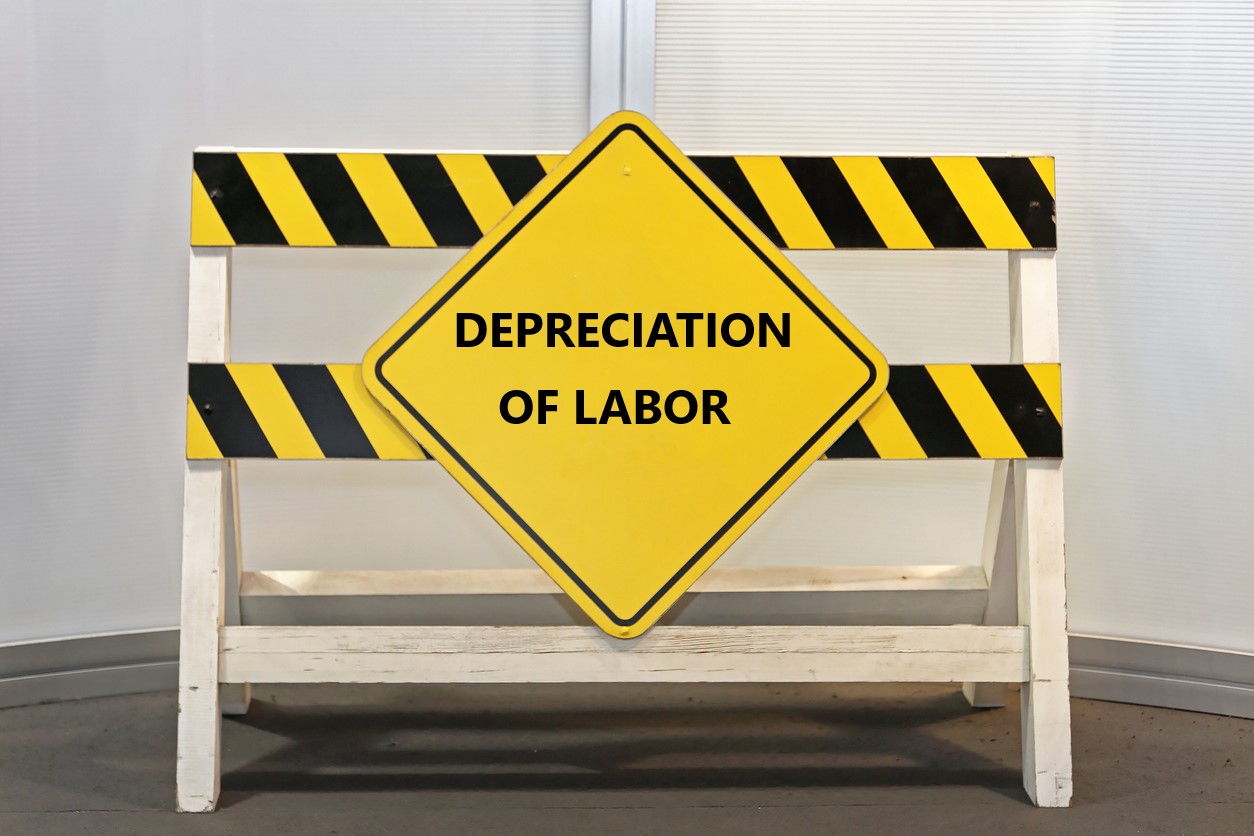On March 18, 2020, the Sixth Circuit Court of Appeals issued its opinion in Perry v. Allstate Indemnity Company,1 ruling as a matter of law that it was improper for Allstate to depreciate labor costs.
Exactly one year earlier, on March 18, 2019, Chip Merlin of Merlin Law Group filed an amicus curiae brief in Perry on behalf of United Policyholders, a consumer protection organization devoted solely to the interests of policyholders.
An amicus curiae (friend of the court) brief is a written document from a person or organization that is not a party to a case but may have a strong interest in the issue being considered, who seeks to educate the court by offering facts, analysis, or a perspective that the party briefing doesn’t present. United Policyholders has filed amicus curiae briefs since 1991. You can read a copy of the brief here.
Here are the pertinent background facts. On June 28, 2015, Andrea Perry’s home sustained significant water damage, requiring extensive repairs. The home was covered by a policy issued by Allstate Indemnity Company (“Allstate”), under which Perry promptly made a claim. Allstate did not dispute that the home was significantly damaged, or that it was required to pay for repair or replacement. Allstate sent an adjuster to survey the claim and adjust Perry’s claim in accordance with Allstate’s adjusting policies and procedures. On September 7, 2015, the adjuster submitted the final estimate, which determined that the cost to repair or replace Perry’s damaged property totaled $32,965.09. The replacement cost figure included amounts for material, labor, contractor overhead and profit (“CO&P”) and sales tax. Allstate’s policy did not contain any definition of ACV but provided only that it would pay an insured the ACV. In the estimate Perry received, Allstate subtracted depreciation of $4,570.35, providing Perry with a net ACV payment of $28,394.74.
Although labor does not depreciate as a physical asset does, and the Allstate policy did not provide for depreciation of labor, Allstate depreciated not only materials but also labor, and deducted it from the replacement cost. Perry contended that this was contrary to guidance from the Ohio Department of Insurance that it is inappropriate to depreciate labor. Perry also argued that Allstate properly added CO&P to the estimate, but then improperly “depreciated” those amounts. Thus, Perry alleged that she received less than she was entitled to under the terms of her policy due to Allstate’s improper depreciation of labor and CO&P.
Perry, on behalf of others similarly situated, filed suit for breach of contract against Allstate in Cuyahoga County, Ohio state court, as a result of its routine practice of denying coverage for a portion of the ACV of its insureds’ damaged property. Allstate removed the case to the U.S. District Court for the Northern District of Ohio. The federal district court ordered the certification of a question to the Supreme Court of Ohio, seeking clarification as to whether Ohio law requires insurers to exclude labor costs from depreciation calculations where determining ACV. On February 22, 2017, the Supreme Court of Ohio declined to certify the question and Perry moved the district court to reactivate the case. Allstate filed a motion to dismiss the breach of contract claim, arguing that neither Ohio law nor Plaintiff’s insurance policy requires labor and GCOP to be excluded from depreciation when calculating actual cash value payments. On November 26, 2018, the district court issued an opinion, granting Allstate’s motion to dismiss the complaint. Perry filed a notice of appeal to the Sixth Circuit Court of Appeal.
On appeal, the Sixth Circuit Court of Appeal held “as a matter of law that it was improper for Allstate to depreciate labor costs to arrive at its net payment to Perry for the damage to her home,”2 The court explained “under Ohio law, an ambiguous policy with competing reasonable interpretations must be construed in favor of the insured” and “Perry’s interpretation—that in calculating ACV depreciation does not include labor costs—has been recognized as reasonable by numerous state and federal courts, including our own, because depreciation traditionally refers to value lost from physical wear and tear.”3 The court explained:
Neither the insurance policy nor the Ohio Administrative Code defines ‘depreciation.’ And the Ohio Supreme Court has not weighed in on this question. Thus, ‘depreciation’ is left undefined and, Perry argues, is ambiguous. We agree that the policy is ambiguous and hold that Allstate improperly depreciated labor costs in calculating ACV.
Notably, the court’s ruling was consistent with its prior decision in Hicks v. State Farm Fire & Cas. Co., 751 Fed.Appx. 703 (6th Cir. 2018):
As here, the insurance policy in Hicks did not define ‘depreciation.’ Neither did the Kentucky Administrative Regulations. But, like here, the regulations did define ACV. See 806 KY. ADMIN. REGS. 12:095(9)(2) (2007). Kentucky’s regulations define ACV as ‘replacement cost of property at the time of the loss less depreciation, if any.’ Id. Ohio’s regulations define ACV as ‘replacement cost of property at the time of loss, including sales tax, less any depreciation.’ OHIO ADMIN. CODE § 3901-1-54(I)(2)(a) (2016). Allstate makes much of the fact that the Kentucky regulations say ‘depreciation, if any,’ while the Ohio regulations say ‘any depreciation.’ In its view, ‘any depreciation’ means all types of depreciation. We read ‘any depreciation’ as simply saying ‘whatever depreciation there happens to be.’ Allstate’s interpretation just begs the question of what ‘depreciation’ means in the first place.
Moreover, Perry’s interpretation—that in calculating ACV depreciation does not include labor costs—has been recognized as reasonable by numerous state and federal courts, including our own, because depreciation traditionally refers to value lost from physical wear and tear. See Hicks, 751 F. App’x at 709–11 (collecting cases). Though a slim majority of courts may have gone the other way, see id. (collecting cases), that does not matter for our purposes because we do not ask whose reading is ‘more reasonable.’ Andersen, 757 N.E.2d at 333. Like the insurer in Hicks, Allstate ‘could have removed any ambiguity by simply writing its policies to expressly include labor depreciation when calculating ACV.’ See Hicks, 751 F. App’x at 709. But it didn’t, and under Ohio law, an ambiguous policy with competing reasonable interpretations must be construed in favor of the insured. Andersen, 757 N.E.2d at 332–33.4
This is another important ruling in favor of policyholders. For more blogs on the topic of labor depreciation, make sure to read:
https://www.propertyinsurancecoveragelaw.com/2020/03/articles/insurance/does-north-carolina-allow-depreciation-of-labor-when-determining-actual-cash-value/
https://www.propertyinsurancecoveragelaw.com/2020/03/articles/insurance/how-playing-the-float-taking-depreciation-on-labor-or-tear-out-is-needed-cheating-for-many-insurance-companies/
https://www.propertyinsurancecoveragelaw.com/2017/08/articles/uncategorized/depreciation-of-labor-and-actual-cash-value/
https://www.propertyinsurancecoveragelaw.com/2017/08/articles/insurance/new-arkansas-insurance-department-bulletin-on-depreciation-of-labor/
https://www.propertyinsurancecoveragelaw.com/2017/08/articles/insurance/colorado-joins-a-growing-list-of-jurisdictions-allowing-depreciation-of-labor-costs-when-determining-actual-cash-value/
_______________________________
1 Perry v. Allstate Indemnity Co., No. 18-4267 (6th Cir. March 18, 2020).
2 Id. at 8.
3 Id. at 7-8.
4 Id. at *6-7 (emphasis added).




